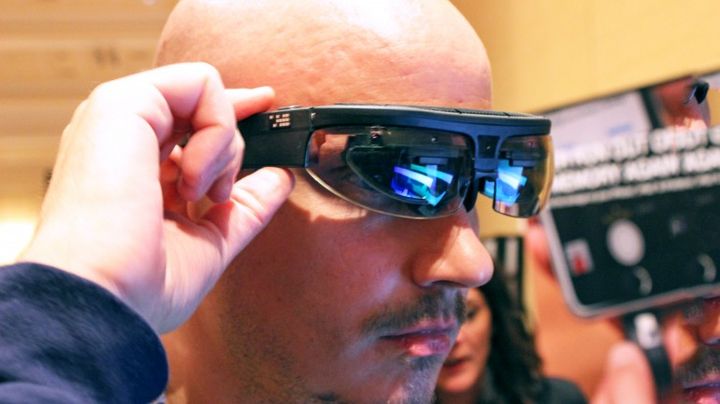
Tech-giant Google made a huge splash in 2012 with the unveiling of Glass. Though not the first wearable computer or head-mounted display ever made, the product’s entry into the consumer electronics market has set a bold new standard. Since that time, many big name companies and smaller startups have sought to introduce their own smart glasses in order to snag a portion of the growing “wearables” market.
One such group is the Osterhout Design Group (ODG), a California-based tech company that has been supplying advanced AR eyewear to the US armed forces for the past six years. And at this year’s Consumer Electronics Show (CES 2015), they presented a sixth-generation consumer version of their work that are based on the same fundamental principles as the military version, but with a few adjustments.
These include new proprietary optical and electronic configurations that allow for a sleeker, lightweight look and feel that is more suited to consumer applications. The glasses run on a Qualcomm Snapdragon 805 processor and come equipped with accelerometers, magnetometers, gyroscopes and a nine-axis internal measurement unit (IMU).
Additional hardware features include a high-speed autofocus camera, stereo audio, as well as Wi-Fi, Bluetooth and GPS connectivity. And as you can see from the photos, the glasses look like something out of a cyberpunk novel. William Gibson must be feeling pretty good about himself right now!

Similar to their military-issue "R-6" model (pictured above), the "Consumer" model (below) runs on ODG's propriety ReticleOS operating system, which runs atop Android. In keeping with the trend set by Google Glass, they are also hands-free, tether-free, wireless, and run on rechargeable batteries.
Primary control of the glasses is done via touch, but it also comes with a Bluetooth ring controller with a tiny touchpad and buttons. Similar controls are mounted on the glasses themselves, and there's an option to pair the glasses to a smartphone so it can act as the touchpad controller. According to the company and sources who test-wore the glasses at CES 2015, the ODG glasses are also quite ergonomic and not much heavier than regular glasses, weighing around 125 grams (4 oz).
However, the biggest attribute comes in the displays, which are noticeably more advanced. Where Google Glass uses a small display mounted above and to the right of the user’s field of view, the ODG smartglasses have two screens mounted within the frames that provide a 720p HD display to both eyes. This allows for a much wider field of view, and since it projects a slightly different image to each eye, it can employ stereoscopic 3D imaging.
This is to expected since ODG was clearly going for full-scale AR technology. Whereas Glass was designed to provide users with the ability to access information at a glance, these are intended to provide a more immersive experience while still staying portable. This arguably places the glasses somewhere on the wearables spectrum between the Oculus Rift and Google Glass, which is apparently what ODG was going for.

As Nima Shams (Vice President of OGD) was quoted by Forbes as saying: “You can’t watch a movie or browse the Internet on Google Glass. Even developing for it, it’s not standard Android, you have to do pages methodology. And on the other end of the spectrum is Oculus. It’s immersive, you get lost, but you’re not able to see through and it’s not mobile. You need a hefty PC. ODG falls in the middle.”
While smartphones and tablets are able to carry out most of the same functions as these glasses, ODG claims their product is better suited to things that are difficult to do with these devices. These incude watching 3D movies in bright sunlight, playing interactive 3D games and navigating with heads-up directions while remaining hands free.
So in addition to AR enthusiasts, people may find such devices useful for outdoor activities and perhaps even driving (though it remains to be seen if the law will concur). The main downside appears to be the fact that the glasses still don't look or feel llike regular glasses. This is a major challenge for developers of smartglass technology, who want to create a product that won't make wearers feel overly conspicious or out of place.
Recent backlashes against Google Glasses wearers, who are sometimes derogatorily referred to as "glassholes", have raised concerns about the reception wearables and their users are recieving. Making them look more natural is seen as a way of reducing the stigma smartglasses have, as well as attracting a wider consumer base by making it easier to integrate them into daily life.
OGD claims that the glasses will be commercially available later this year with a target price of $1000. If you're a futurists or a big fan of cyberpunk, you may want to keep your eyes open!
Sources:
- http://www.gizmag.com/odg-augmented-reality-glasses/35462/
- http://www.osterhoutgroup.com/system-products
- http://mashable.com/2015/01/08/smart-glasses/
- http://www.computerworld.com/article/2864366/ar-smart-glasses-from-odg-offer-stylish-augmented-reality.html
- www.forbes.com/sites/aarontilley/2015/01/02/secretive-military-tech-company-announces-augmented-reality-glasses-for-consumers/
- http://www.businesswire.com/news/home/20150102005058/en/Augmented-Reality-Smart-Glasses-System-Osterhout-Design#.VLGj2ntFW-c
- http://www.digitaltrends.com/cool-tech/smart-glasses-meet-style-osterhout-design-groups-attempt-outclass-google-glass/
- http://www.techtimes.com/articles/24395/20150104/ces-2015-must-see-osterhout-design-group-raises-bar-for-augmented-reality-smartglasses.htm
Image Credits:
- Top Image: gizmag.com
- ODG R-6: ODG
- ODG Consumer Model: ODG








